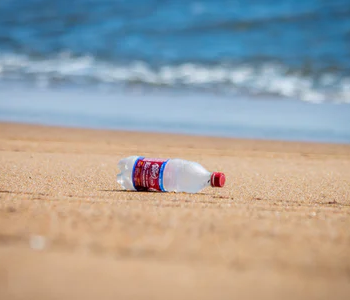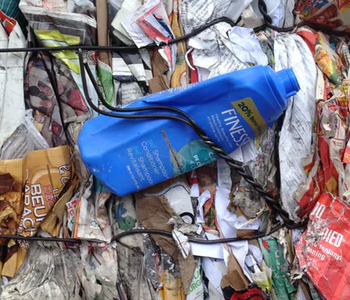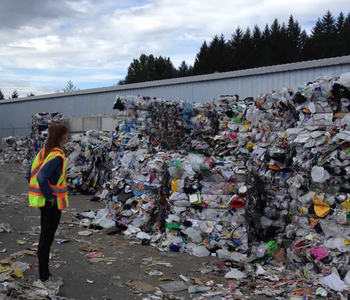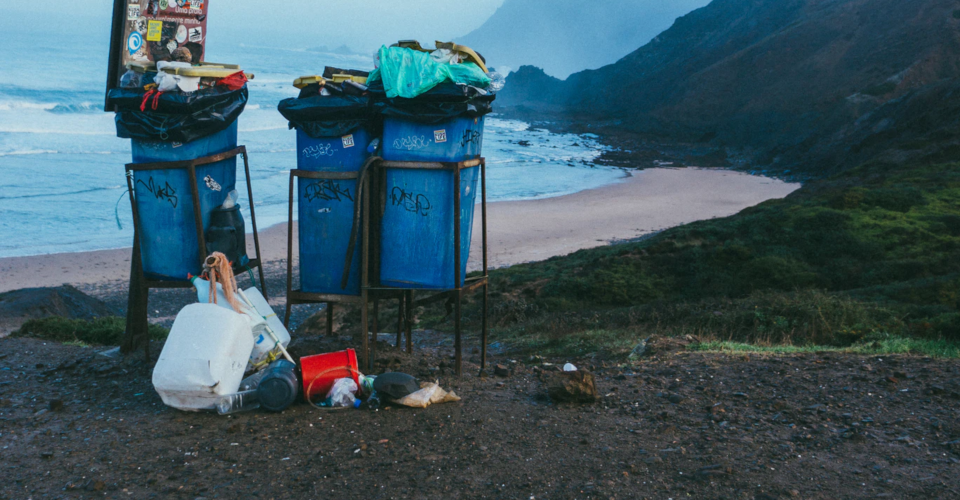How to Recycle Plastic: Which plastics can be recycled?
Solid waste remains a steadily growing problem of our world, and plastic is certainly a huge contributor. Since the 1950s, the use and manufacture of plastic products have seemingly doubled every 15 years, causing a strain in the supply of petroleum-based raw materials and the accumulation of non-biodegradable solid waste.
One of the most commonly practiced ways to stem these problems is to recycle used plastic products. Although an effective solution, the recycling of plastics is still limited and still has to overcome a lot of technology-related challenges. How exactly does plastic recycling work?
Which plastics can be recycled?
Here’s the first thing that everyone should know – not all types of plastics can be recycled. Fortunately, it has become a lot easier nowadays to tell the different types of plastics apart. You can find numbers on most plastic containers and bottles that indicate what type of plastic they are made of. To check if a plastic container can be recycled look for the following numbers:
- 1 – PET (Polyethylene Terephthalate)
- 2 – HDPE (High-Density Polyethylene)
- 4 – LDPE (Low-Density Polyethylene)
- 5 – PP (Polypropylene)
On the other hand, the following types of plastics cannot be recycled:
- 3 – PVC (Polyvinyl Chloride)
- 6 – PS (Polystyrene)
- 7 – Other
The most common plastic products that are prime candidates for recycling are those used as containers for food and drinks. Some sacks and carrier bags can also be recycled, as can clothes made from polyester fabric. Other common examples include crates and pallets, piping and drainage systems for homes, flowerpots, watering cans, food caddies, and car bumpers.
Large-scale recycling is often handled by dedicated recycling facilities financed by the local government. In these facilities, recyclable plastics from the local community are collated and processed together, making the entire venture more economical.
However, consumers must also be very careful about which plastic products they throw into the recyclables bin. Aside from distinguishing between which plastics are recyclable and those that are not, here are a few more tips to ensure that you don’t become a burden to your local recycling facility:
Remove caps from plastic bottles

There are two reasons why you should be removing caps from plastic bottles before you throw them in the recycling bin. The first is that bottles and caps are made from two different kinds of plastic, which means that they should already be segregated at the collection point. The second reason is that these caps tend to fly off and become dangerous projectiles when the bottles are crushed as part of the recycling process. This means that workers will have to manually remove all bottlecaps, which requires a lot of time and manpower.
Take note of labels, dyes, and paint
While the plastics we indicated are recyclable on their own, they may have additives in them that make processing them complicated. If your water bottle or food container has a plastic or paper label, you should remove those before you place them in the recycling bin. If the plastic container has painted on colors and labels, you will also need to check if the paint or dye used is also recyclable. Otherwise, these paints and dyes can contaminate a whole batch of recycled plastics.
Wash off food residue
Many of the recyclable plastic products around us are used for food storage. When throwing these in with the recycling, it’s important to make sure that they have been rinsed thoroughly of any food residue and dried. Food residue is a prime breeding ground for bacterial growth which can contaminate a whole lot of recyclable plastics. These also become health hazards for the people who need to collect and sort through all the recyclables before they are processed.
Plastic bags are recycled separately

Plastics bags are an unusual problem for recycling facilities. Although most plastic bags are made from recyclable HDPE, LDPE, or PP, they are too thin and soft to be handled by most plastic recycling equipment. This can lead to jamming of conveyor belts and gears, resulting in unplanned downtime.
To remedy this problem, some grocery chains or big box stores often offer a separate recycling bin for plastic bags. However, segregating plastic bags is difficult as these often do not contain any labels that pertain to what type of plastics they are made of. A more effective and sustainable solution is to reduce the use of plastic bags altogether or to reuse them as many times as possible before disposal.
How does plastic recycling work?
Collection
The most difficult step of the whole recycling process is the first one – collection. This requires the cooperation of businesses, restaurants, and the general public to ensure that all recyclable plastics end up in the proper recycling bins. Ideally, there should be multiple collections in an area that are accessible and convenient. Local governments can also provide a service that goes to businesses or houses to collect their recyclables.
Collection is particularly essential because the whole process of recycling hinges on its proper implementation and compliance. Take note that recyclable plastics will not make it to the recycling facility if they are thrown in with regular trash. Collection is also the major point of failure as it requires the compliance of a lot of people for it to work. In countries or cities where recycling has not yet become a norm, even succeeding in this first step will prove to be a huge challenge.
Sorting

Recyclable plastics typically arrive at recycling facilities at an unsorted state. Since recycling processes are specific for each type of plastic, each lot has to be sorted to avoid cross-contamination. This is done either through dedicated sorting equipment or manually.
The sorting algorithm doesn’t just discriminate between different types of plastics. It also takes into account the size, color, or even how the plastic product was made. This is necessary because recycled plastic often has designated applications that will require specific physical and chemical characteristics. There are also certain processes that are only designed to handle particular types, colors, and sizes of recyclable plastic products.
For some facilities, sorting is necessary as they are only designed to handle certain types of recyclable plastics. Those that cannot be processed are either passed to other recycling facilities or incinerated.
Washing
The plastic recycling process requires very specific chemical conditions for it to work optimally. This emphasizes how important it is that contaminants be removed from recyclable plastic before they are processed. As we’ve mentioned, these include any reside from bottles and containers used for food and drinks.
Far more common is the need to remove labels and adhesives from plastic packaging. Whether these labels are made of paper or plastic, they cannot be mixed into the recyclables stream. A contaminated batch of recycled plastic can result in products with questionable structural integrity or a complete failure of the recycling process.
Resizing

In the resizing step, the plastic to be recycled is shredded into very fine particles using a series of sharp blades. This makes them easier to handle, transport, or process. In some facilities, this also provides a final opportunity to remove any contaminants either with a second round of washing or by the use of magnets or metal detectors.
Separation and identification
Once the plastics have been shredded, they can be more easily separated according to particular physical and chemical properties. The most common qualifier is density. Plastic particles can be easily separated by density by placing them into a large tank of water or a wind tunnel where the lighter particles will float at the top and the heavier ones will sink to the bottom. Light and heavy plastic particles can then be processed separately, with their recycled products used for different applications.
Plastic particles can also be separated according to their melting point and color. This is done either through the use of optical sensors or by controlled melting of the recyclable plastic stock. Again, separating plastic particles based on these qualifiers allows for more refinement on the properties of the recycled plastic products that will come out of the process.
Compounding
By subjecting the plastic particles to pressure and heat, they can be melted and molded into forms that are more useful for other industries. In most cases, molten plastic is extruded into pellets, which are then packed and sold to plastic processing companies.
The pressure and temperature needed to process huge batches of recyclable plastic mean that this is likely the most energy-intensive step of the recycling process. There may be cases where the compounding step is done in a facility that is separate from the sorting and resizing steps.
Current challenges in plastic recycling
Plastic recycling technology has been available for decades, but solid plastic waste continues to be a growing environmental problem. What are the challenges of plastic recycling and why has it not proved to be an all-encompassing solution?
1. Accessibility

Rich countries may have gotten accustomed to the practice of curbside recycling, but a huge portion of the world doesn’t even have plastic recycling facilities. This has become a huge problem, considering that the whole world’s plastic consumption has continued to grow exponentially.
In the absence of any plastic recycling facility, all plastic waste tends to go either to landfills or incinerators. This results in either a contribution to air pollution or leaching of toxic substances to the surrounding soil. In any case, there is no ideal outcome for cities and communities that have no viable means of recycling plastic waste.
The reality is that plastic recycling is a very expensive venture. From the equipment needed to sort and process the waste, to the manpower and energy needed to run the facility, it can be a huge investment with very little returns.
2. Degradation
Although there are types of plastics that are 100% recyclable, there is a tendency for these plastics to deteriorate after being recycled. The most obvious manifestation of this is the degradation of the plastic’s structural integrity. According to experience, a piece of plastic can only be recycled two to three times until it reaches a point where it is no longer of any use.
For recycled plastic products to be of any use, some virgin plastic is often blended into the recycled material. This means that you can rarely find a piece of recycled plastic nowadays that is 100% recycled. This somewhat defeats the objective of a closed-loop system that discourages the manufacture of virgin plastics.
3. Compliance
Even in areas where plastic recycling has become a norm, compliance is still an unending issue. For the recycling process to work, it has to start at the consumer level. Individual users need to sort their recyclable wastes properly and rinse them of any contaminants or residue. This is easier said than done, as it turns out.
Lack of compliance at the consumer level puts additional pressure on the recycling facility in terms of sorting and cleaning the recycled plastic stream. This slows down the recycling process, making it even less economical.
4. Limitations of technology
As we’ve mentioned, there are certain types of plastic that simply cannot be processed by the plastic recycling technology we have nowadays. This is probably one of the biggest problems of solid waste management, and one that the scientific community has continuously been trying to solve.
There have been a lot of efforts to use non-recyclable plastics as filler materials for construction and road materials, but none of these have been able to scale up to make a dent on the world’s solid waste accumulation.
Final thoughts
Although plastic recycling has been around for decades, there are still a lot of people who do no understand how to do it properly. With the knowledge of how the whole process works, we hope that we have instilled a better consciousness of what it takes for the efforts of plastic recycling to work. It truly takes a concerted effort to collaborate from individual consumers to local governments.
Unfortunately, the vast majority of the world don’t even have access to plastic recycling facilities. We can only hope that the movement to more sustainable packaging solutions helps to slow down the rate at which we accumulate non-biodegradable solid waste.

